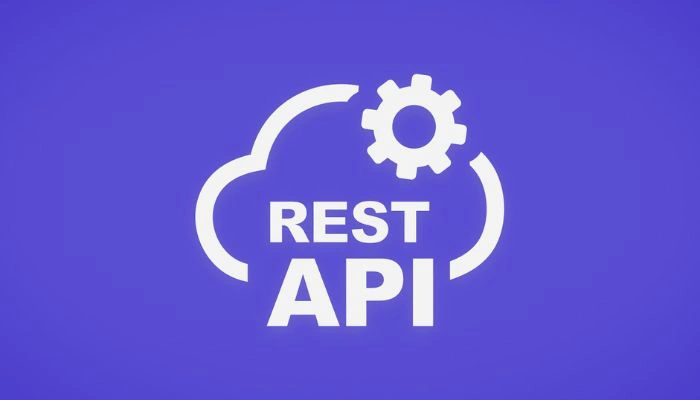Manage Technical Debt in Your Consulting Engagement for Application Development
As a consultant, managing technical debt during application development is crucial for ensuring that the final product is of the highest quality. Technical debt refers to the cost of maintaining and improving an application in the future due to shortcuts taken during the development process. It can accumulate over time and lead to increased maintenance costs, decreased performance, and reduced agility. Therefore, it is important to address technical debt early on in the development process to avoid these negative consequences.

Understanding and identifying technical debt is the first step in managing it. Technical debt can take many forms, including code complexity, outdated technology, and poor documentation. By identifying the specific areas of technical debt within an application, the CTO and development team can prioritize which areas to address first and develop strategies for managing them. This can involve refactoring code, updating technology, and improving documentation.
In conclusion, managing technical debt is an essential part of any consulting engagement for application development. By understanding and identifying technical debt, and implementing strategies for managing it, consultants can help their clients avoid the negative consequences of technical debt. Balancing innovation and debt management is key to ensuring that the final product is of the highest quality and delivers value to the business.
Key Takeaways
- Identifying technical debt is the first step in managing it
- Prioritizing areas of technical debt and developing strategies for managing them is crucial
- Balancing innovation and debt management is key to delivering value to the business
Understanding and Identifying Technical Debt

As a consultant for application development, I have seen that technical debt is a common challenge faced by many organizations. Technical debt refers to the cost of maintaining poorly written code or taking shortcuts during the development process. In this section, I will discuss how to recognize symptoms of technical debt and the types of technical debt.
Recognizing Symptoms of Technical Debt
There are several symptoms that can indicate the presence of technical debt. One of the most common symptoms is complexity. When the code becomes complex, it becomes difficult to maintain, and the cost of fixing bugs increases. Another symptom is poor code quality, which can lead to a lack of documentation, making it challenging for developers to understand the code. Additionally, legacy code can be a sign of technical debt, as it may be difficult to integrate with new code.
Types of Technical Debt: Deliberate vs Inadvertent
Technical debt can be either deliberate or inadvertent. Deliberate technical debt is incurred intentionally to achieve short-term goals. For example, a developer may choose to take shortcuts to meet a deadline, knowing that it will result in technical debt. In contrast, inadvertent technical debt is incurred unintentionally, often due to a lack of understanding or experience. For example, a developer may not realize that a particular approach will result in technical debt.
It is important to note that technical debt can accumulate over time, leading to software entropy. Therefore, it is crucial to manage technical debt proactively by incorporating refactoring and code quality measures into the development process. By doing so, organizations can reduce the cost of maintenance and improve the overall quality of their codebase.
In summary, technical debt is a common challenge in application development. By recognizing the symptoms of technical debt and understanding the types of technical debt, organizations can take steps to manage it proactively. This includes incorporating refactoring and code quality measures into the development process to reduce the cost of maintenance and improve the overall quality of the codebase.
Strategies for Managing Technical Debt

As an experienced consultant in application development, I have found that managing technical debt is crucial for the success of any project. Here are some strategies that I have found to be effective in managing technical debt:
Calculate and Monitor Technical Debt
To manage technical debt effectively, it is essential to calculate and monitor it regularly. This can be done by using tools like SonarQube, which can help track technical debt and code quality. By monitoring technical debt, you can identify areas that need improvement and prioritize them accordingly.
Reduce Technical Debt through Code Refactoring
One of the best practices for managing technical debt is to reduce it through code refactoring. This involves improving the codebase by eliminating duplicate code, reducing complexity, and improving readability. Martin Fowler suggests that code refactoring should be done continuously and gradually to avoid a large accumulation of technical debt.
Incorporate Agile Practices
Agile practices can help manage technical debt by providing flexibility and scalability to the development process. Agile methodologies like Scrum and Kanban can help prioritize technical debt and ensure that it is addressed in a timely manner. Additionally, incorporating pair programming and automated testing can help catch technical debt early on in the development process.
Involve Stakeholders
Managing technical debt is not just the responsibility of the development team. It is essential to involve stakeholders like the product owner and product management to prioritize technical debt and ensure that it aligns with the overall business goals. By involving stakeholders, you can ensure that technical debt is addressed in a way that benefits the organization as a whole.
Foster a Culture of Excellence
To effectively manage technical debt, it is essential to foster a culture of excellence within the development team. This involves encouraging team members to take ownership of their work and strive for excellence in everything they do. Additionally, providing opportunities for learning and growth can help improve team morale and reduce technical debt in the long run.
In conclusion, managing technical debt is crucial for the success of any software product. By incorporating best practices like code refactoring, agile methodologies, stakeholder involvement, and fostering a culture of excellence, it is possible to effectively manage technical debt and ensure the long-term success of the project.
The Impact of Technical Debt on Business

As a consultant in application development, I have seen firsthand the negative impact that technical debt can have on businesses. Technical debt is the result of taking shortcuts or neglecting to address underlying issues in software development. It can manifest in a variety of ways, affecting everything from resources to customer experience.
One of the most significant impacts of technical debt is on the quality of software. When technical debt is not addressed, it can lead to an increase in bugs and defects, making the software unreliable and difficult to maintain. This can result in a poor customer experience, which can ultimately impact revenue.
Moreover, technical debt can also impact speed and functionality. When developers are forced to work with legacy code or outdated systems, it can slow down the development process and limit the functionality of the software. This can lead to a backlog of work that needs to be addressed, further delaying the release of new features.
In addition, technical debt can also impact costs and maintainability. Neglecting technical debt can result in short-term decisions that ultimately lead to higher costs in the long run. Furthermore, it can make the software difficult to maintain, leading to increased maintenance costs over time.
Technical debt can also impact enterprise stability and financial debt. If technical debt is not addressed, it can lead to cyberattacks and other red flags that can compromise the security of the software and the enterprise as a whole. This can result in financial debt and other negative consequences, such as loss of revenue and damage to the company's reputation.
In conclusion, technical debt is a significant issue that businesses need to address to ensure optimal software development and customer experience. It is essential to prioritize addressing technical debt to avoid negative impacts on resources, quality, bugs, interest, speed, backlog, functionality, costs, maintainability, enterprise, stability, financial debt, defects, customer experience, flexibility, and revenue. As Gartner notes, addressing technical debt can reduce time to market, improve ROI, and ultimately lead to more successful software projects and maintenance.
Conclusion: Balancing Innovation and Debt Management

In conclusion, managing technical debt is crucial for the success of software development projects. As I have seen in my consulting engagement, prioritizing the reduction of technical debt can lead to better and faster development of epic features that can increase market share.
However, it is important to balance technical debt reduction with innovation. Technical debt should not be seen as inherently harmful, but rather as a trade-off between short-term gains and long-term sustainability.
To achieve this balance, it is important to regularly assess the scope and impact of technical debt and prioritize its reduction accordingly. This can be done by identifying assumptions that may have led to the accumulation of technical debt and addressing them through effective communication and collaboration between teams.
Moreover, it is important to establish a culture of continuous improvement that encourages the identification and mitigation of technical debt as part of the development process. This can be achieved by incorporating technical debt management into the project management framework and providing training and support to development teams.
Overall, by balancing innovation and debt management, software development projects can achieve both short-term gains and long-term sustainability.
Frequently Asked Questions

What are the consequences of not managing technical debt in a consulting engagement for application development?
Not managing technical debt can lead to several consequences, such as increased maintenance costs, decreased productivity, and a decrease in the quality of the application. Technical debt can also lead to longer development cycles and missed deadlines, which can negatively impact the project's success.
How can technical debt be identified and prioritized in a consulting engagement for application development?
Technical debt can be identified by analyzing the codebase, looking for code smells, and conducting code reviews. Prioritization can be done by assessing the impact of the technical debt on the application's functionality, maintainability, and scalability. It is also important to consider the potential risks and costs associated with each technical debt item.
What strategies can be used to manage technical debt in a consulting engagement for application development?
Several strategies can be used to manage technical debt, such as refactoring, rewriting, and paying off the debt incrementally. It is important to prioritize the technical debt items and develop a plan to address them systematically. Code reviews, automated testing, and continuous integration can also help manage technical debt by identifying issues early in the development process.
How can technical debt be communicated effectively to stakeholders in a consulting engagement for application development?
Technical debt can be communicated effectively by providing clear and concise explanations of the impact of the debt on the application's functionality, maintainability, and scalability. It is important to provide stakeholders with a prioritized list of technical debt items and a plan to address them. Regular progress updates and reports can also help stakeholders understand the status of the technical debt management process.
What is the role of continuous integration and testing in managing technical debt in a consulting engagement for application development?
Continuous integration and testing play a critical role in managing technical debt by identifying issues early in the development process. Automated testing can help catch issues before they become technical debt items, while continuous integration can help ensure that the codebase is always in a working state. By catching issues early, technical debt can be minimized, and the development process can be streamlined.
How can technical debt be prevented from accumulating in a consulting engagement for application development?
Technical debt can be prevented from accumulating by following best practices such as writing clean, maintainable code, conducting regular code reviews, and using automated testing and continuous integration. It is also important to prioritize technical debt items and address them systematically. By preventing technical debt from accumulating, the development process can be more efficient, and the application can be more scalable and maintainable in the long run.









